a.
7− Bromocycloheptraiene (tropylium bromide) completely dissociates in water and gives a yellow precipiate of AgBr with AgNO3. Why?
(b) Why is cyclopentadiene (Ka=10−15) much more acidic than 1,3− cyclohexadience?
C. Explain the following 1,3,5-cycloheptatrience through a cycle, planner triene with six π→e's is not armoatic, whereas tropolone behaves like a phenol.
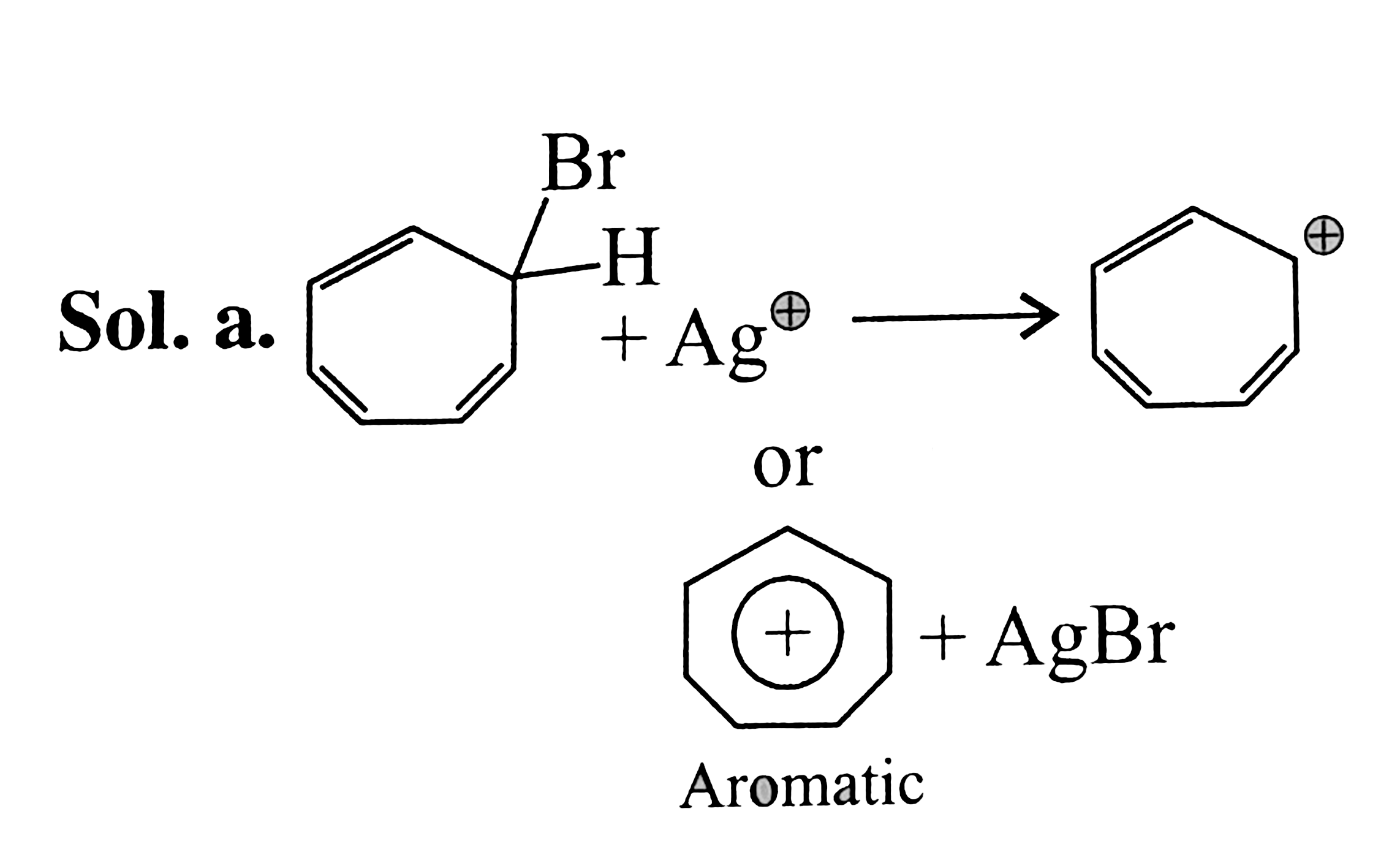
The cycloheptatrienyl carbocation formed by the loss of Bro− is stable due to aromatic character.
b. 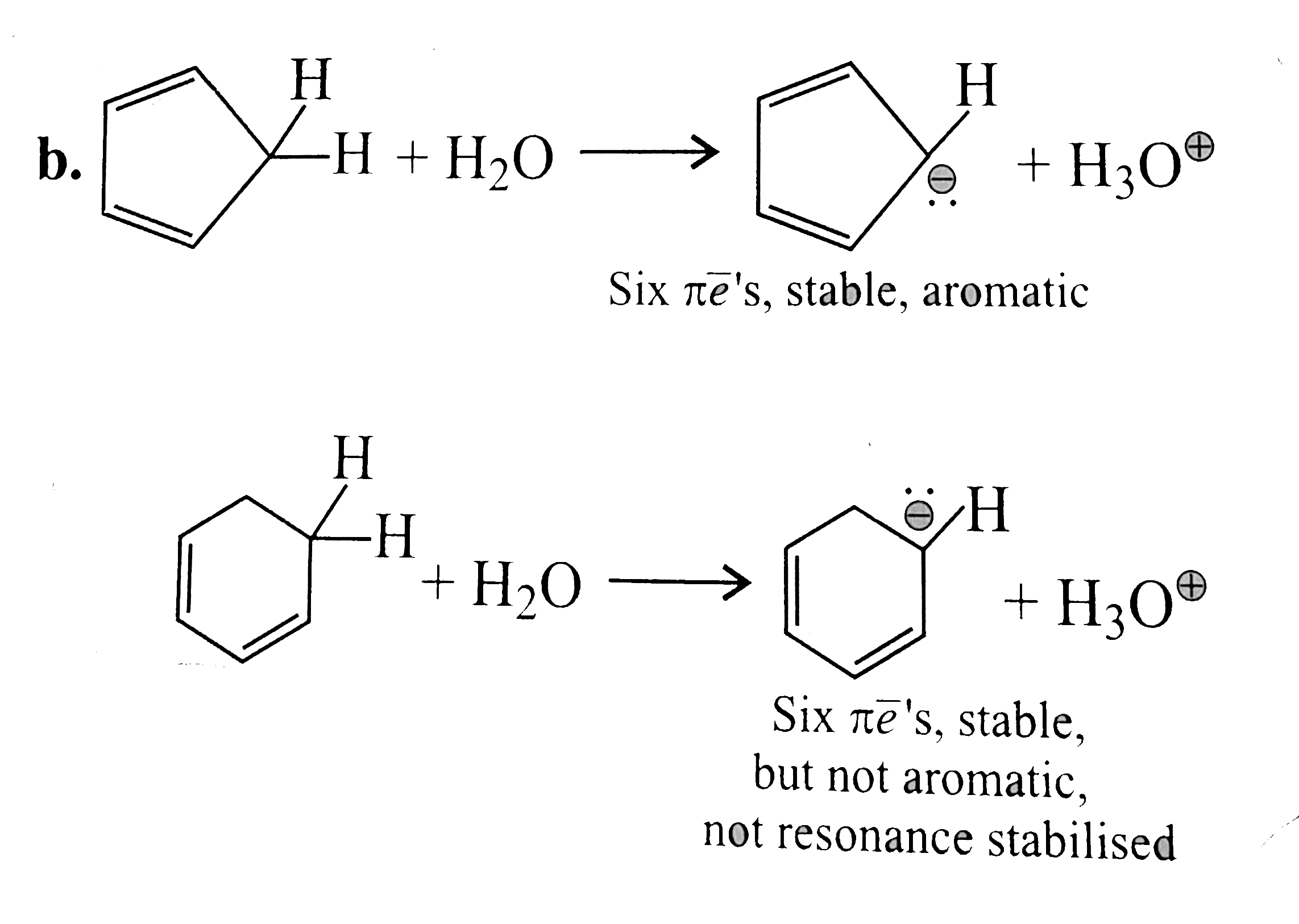
c. Troplylim is not aromatic, while tropolone is aromatic. See Illustration 11.6(13) and (16)
Topper's Solved these Questions
- AROMATIC COMPOUNDS AND ALKYL AND ARYL HALIDES BOOK - CENGAGE CHEMISTRYCHAPTER - AROMATIC COMPOUNDS AND ALKYL AND ARYL HALIDES EXERCISE - Solved Examples
21 Videos
- AROMATIC COMPOUNDS AND ALKYL AND ARYL HALIDES BOOK - CENGAGE CHEMISTRYCHAPTER - AROMATIC COMPOUNDS AND ALKYL AND ARYL HALIDES EXERCISE - Solved Problems
37 Videos
- APPENDIX INORGANIC VOLUME 2BOOK - CENGAGE CHEMISTRYCHAPTER - APPENDIX INORGANIC VOLUME 2EXERCISE - Short Answer Type
179 Videos
- BIOMOLECULESBOOK - CENGAGE CHEMISTRYCHAPTER - BIOMOLECULESEXERCISE - Exercises Archives (Analytical And Descriptive)
8 Videos
Similar Questions
Answer the following :
(i) Phenol is more acidic than ethyl alcohol.
(ii) Phenol is an acid but does not react with NaHCO3.
(iii) Although phenoxide ion has more number of resonating structures than benzoate ino, benzoic acid is stronger acid than phenol . Why ?
(iv) Name the phenol with molecular formula C7H8O which on treatment with Br2 water readily gives a precipitate of C7h5OBr3.
(v) Unlike phenol, 2,4-dinitrophenol and 2,4,6-trinitrophenol are soluble in aqueous sodium carbonate solution.
(vi) Phenol has higher boiling than toluence. although they have almost the same molecular mass.
(vii)Ortho nitro phenol is steam volatile while para nitro phenol is not.
(viii) In Kolbe's reaction, instead of phenol, phenoxide ion is treated with CO2.
(ix) Nucleophilic substitution reactions are not very common in phenols.
(x) The dipole moment of phenol is smaller than that of methanol.
View SolutionIdentify which of the following terms matches with the appropriate descriptions 1 to 5
A: Hydracid (B) Monobasic acid (C ) Less volatile acid ( D) Weak acid (E ) Tribasic acid (F ) Dibasic acid (G ) More volatile acid
1. An acid having basicity 1 and having only one replacement hydrogen ion per molecular of the acid.
2. An acid which dissociates to give a low concentration of H+ ions
3. An acid containing hydrogen and a non-metallic element other than oxygen.
4. The type of acid which generally displaces another acid when the acid is heated with a salt
5. The type of acid which reacts with a base to give an acid salt and a normal salt
View Solution
Knowledge Check
A colourless (A) when place into water a heavy white turbidly of (B) solid (A) gives a close solution in conesolution in cone HCI when HCI solution is added to clear solution water ,(B) forms again (B) dissolves in dilute HCI. When H2S is passed through a sespension of (A) or (B), a black precipitate (C ) forms , (C ) is insolves in yellow ammonium sulphide (NH4)2S , cone H2SO4 added to solid (A) liberates gas (D) gas (D) is water soluble and gives white precipitate with mercuric salts (E ) and not mercuric salt .The black precipitate (C ) dissolves in HNO3,(1,1) to give a solution to which H2SO4 is added followed by addition of NH4OH when a white precipitate (F) is formed (E ) gives a black ppt , (G) with solution of sodium stannite.
Compound (C ) is also formed by the following reactionABa2++S(2)O2−3→EBBi2++S(2)O2−3→ECBi2+S(2)O3Δ−−→EDNone of theseThe dissociation of weak electrolyte (a weak base or weak acid) is expressed in terms of Ostwald's dilution law. An acid is substance which furnishes a proton or accepts an electron pair, where a base is proton acceptor or electron pair donor. Stronger is acid, weaker is its conjugate base. The dissociation constants of an acid (Ka) and its conjugate base (Kb) are related by Kw=Ka×Kb, where Kw is ionic product of water equal to 10−14at25∘C. The numerical value of Kw however increase with temperature. In a solution of an acid or base [H+][OH−]=10−14. Thus the [H+] in a solution is expressed as: [H+]=10−pH and pH+pOH=14. Buffer solution are the solutions which do not show appreciable change in the pH on addition of small amount of acid or base.
Which of the following statements are wrong ?
(1) Increase in temperature has no effect on neutral nature of water.
(2) Increase in temperature of pure water decreases its pH.
(3) Increase in temperature of pure water decreases its autoprolysis.
(4) Increase in temperature of pure increase its ionic product.
(5) Increase in temperature of pure water decreaseas degree of dissociation of water.A3,5B1,2,4C1,5D4,5A colourless (A) when place into water a heavy white turbidly of (B) solid (A) gives a close solution in conesolution in cone HCI when HCI solution is added to clear solution water ,(B) forms again (B) dissolves in dilute HCI. When H2S is passed through a sespension of (A) or (B), a black precipitate (C ) forms , (C ) is insolves in yellow ammonium sulphide (NH4)2S , cone H2SO4 added to solid (A) liberates gas (D) gas (D) is water soluble and gives white precipitate with mercuric salts (E ) and not mercuric salt .The black precipitate (C ) dissolves in HNO3,(1,1) to give a solution to which H2SO4 is added followed by addition of NH4OH when a white precipitate (F) is formed (E ) gives a black ppt , (G) with solution of sodium stannite.
Compound (B ) is not soluble inATartaric ric acidBHCICHNO3DH2SO4
Explain the following:
a) Why alkenes are more reactive than alkanes?
b) Acetylene reacts with ammoniacal silver nitrate solution or ammoniacal cuprous chlroide solution or sodamide to form an acetylide while ethylene does not.
c) But-2-ene shows geometrical isomerism but but-1-ene does not show.
d) Why has but-1-yne a larger dipole moment (0.80 D) than but-1-ene (0.40D) ?
e) Wjhuy alkylnes are slightly more soluble in water than alkenes and alkanes?
f) Cyclopropane is more reactive than cyclobutane.
g) Cyclopentane is more reactive than cyclobutane.
h) Which isomer of C4H)(9)Br yeilds only a single alkene on dehydrobromination?
i) Write the products of dehydrochlorination of the following:
(j) Which of the following reactions would provide a better synthesis of 2-pentene?
k) Write the major products of dehydration of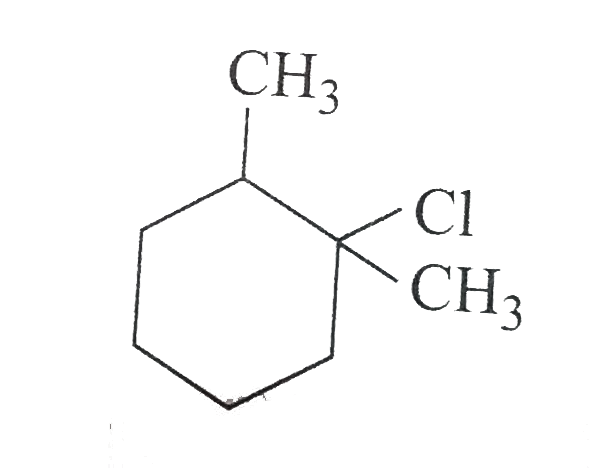
l) Comparison of heat of hydrogenation for the following alkenes:

m) Write the intermolecular step and give the product of the following reactioni:

n) Give the structures of an optically active alkene (A) having the lowest molecular mass, which on catalyst hydrogenation gives an optically inactive compound (B).


View Solution(a) Explain why cleavage of phenyl ethers with HBr always produces phenol and alkyl bromides and not bromobenzene and alkanols.
(b) Give reasons for the following:
(i) The dipole moment of diethyl ether (1.18D) is lower than that of water (1.84D).
(ii) The C-O-C bond angle in ethers is higher than H-O-H angle in water though oxygen is sp3 hybridized in both the cases.
(iii) Dimethyl ether is completely miscible with water but diethyl ether is soluble in water to a small extent.
View SolutionExplain the following :
(a) Why MeNH⊕CH2 (I) is more stable more than MeCH2⊕CH2 (II) when both are 1∘ carbocations ?
(b) Which of the following intermediate is unstable ?
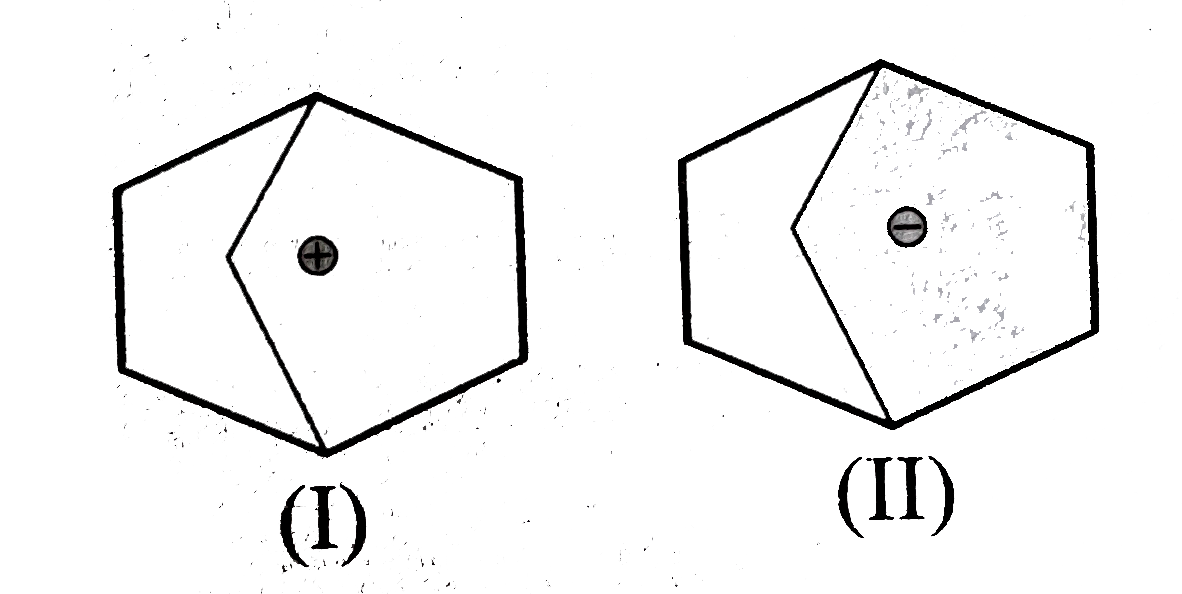
( c) Why allylic free radical (CH2−CH=CH2)(I) is more stable than propy1 free radical (.CH2−CH2−CH3)(II), when both are 1∘ free radicals ?
(d) Arrange the following in the decreasing order of their stabilities :
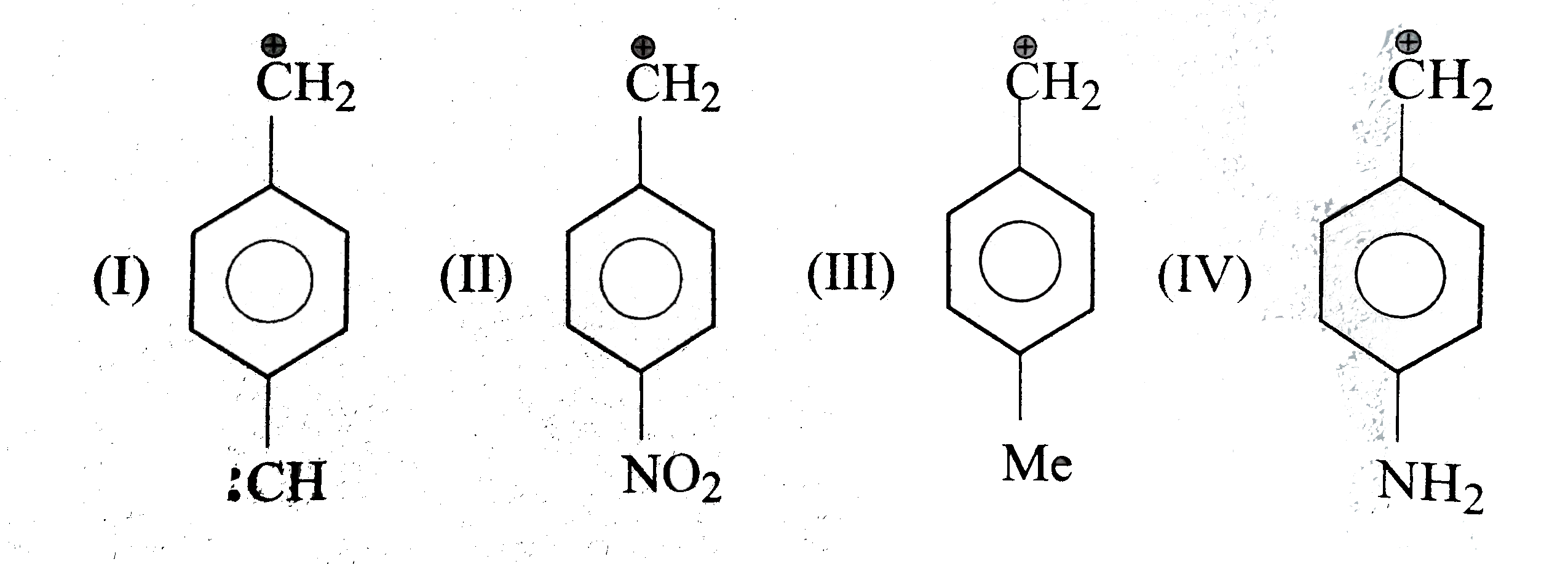
( e) Which of the following resonance structures of p−nitro phenoxide is not feasible ?
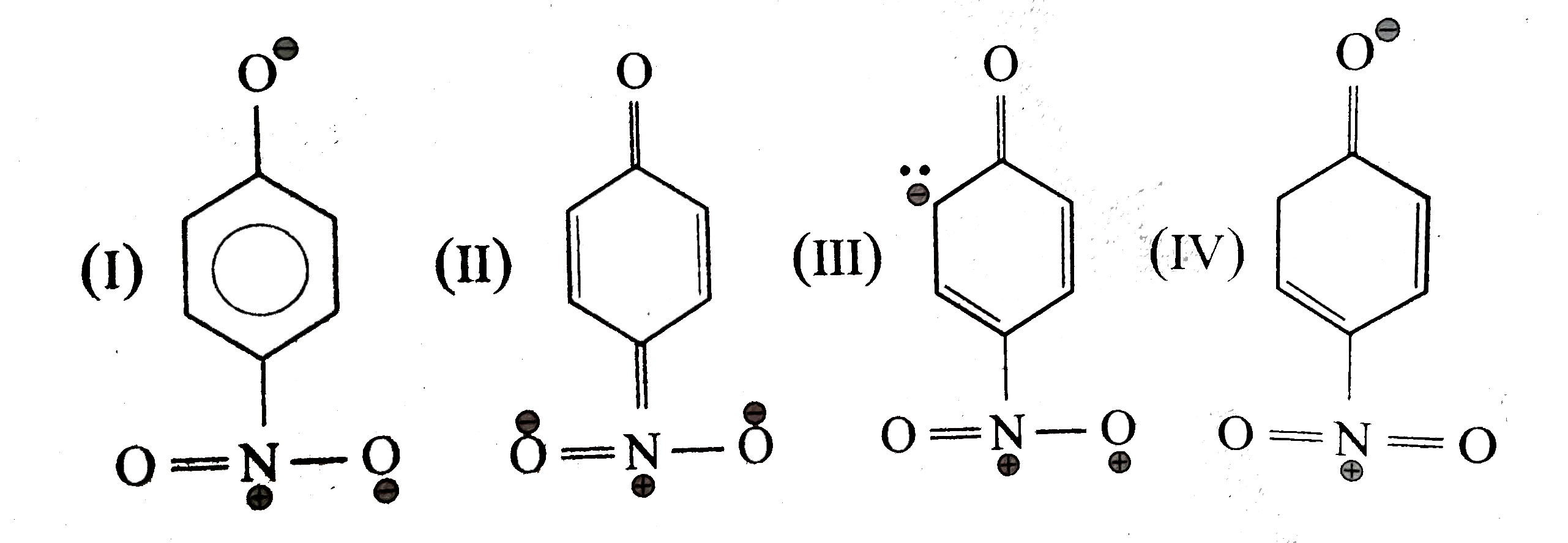 .
.
(f) Which of the more stable carbocation ?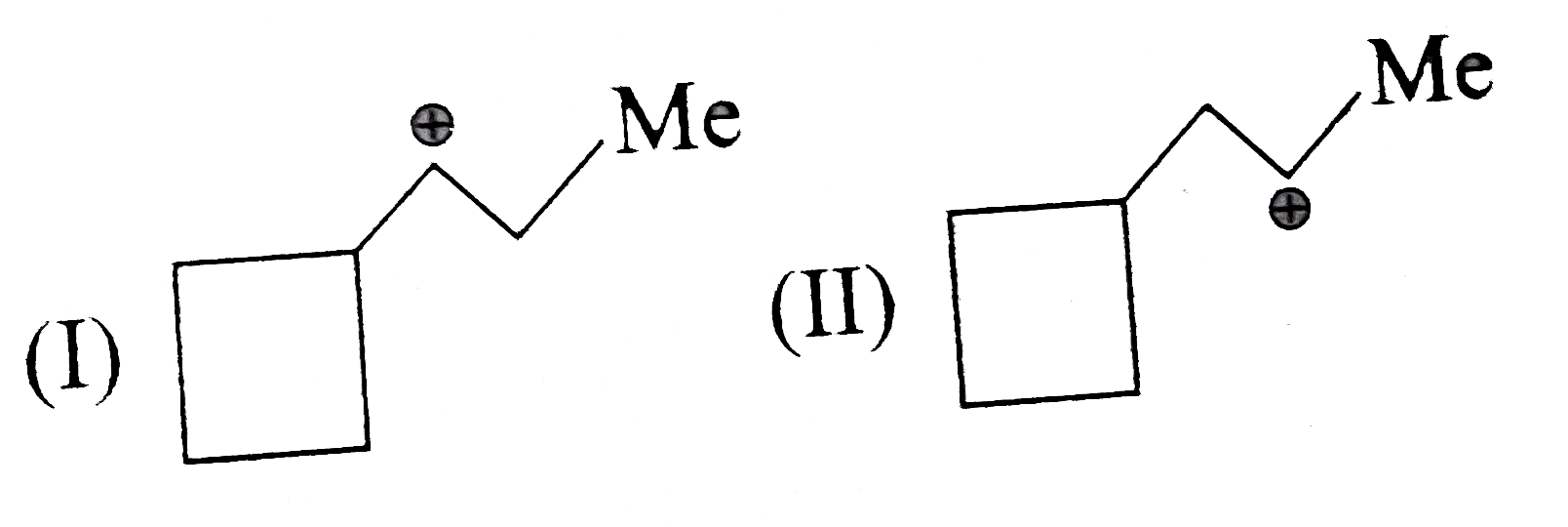 .
.
View SolutionExplain why
(a) the dipole moment of chlorobenzene is lower than that of cyclohexyl chloride ?
(b) alkyl halides, though polar, are immiscible with water ?
(c) vinyl chloride is unreactive in nucleophilic substitution reactions ?
(d) neopentyl bromide undergoes nucleophilic substitution reactions very slowly ?
(e) 3-bromocyclohexane is more reactive than 4- bromocyclohexane in hydrolysis with aqueous NaOH ? (f) tert butyl chloride reacts with aqueous sodium hydroxide by SN1 mechanism while n-butyl chloride reacts by SN2 mechanism.
(g) Grignard reagents should be prepared under anhydrous conditions ?
View SolutionA colourless (A) when place into water a heavy white turbidly of (B) solid (A) gives a close solution in conesolution in cone HCI when HCI solution is added to clear solution water ,(B) forms again (B) dissolves in dilute HCI. When H2S is passed through a sespension of (A) or (B), a black precipitate (C ) forms , (C ) is insolves in yellow ammonium sulphide (NH4)2S , cone H2SO4 added to solid (A) liberates gas (D) gas (D) is water soluble and gives white precipitate with mercuric salts (E ) and not mercuric salt .The black precipitate (C ) dissolves in HNO3,(1,1) to give a solution to which H2SO4 is added followed by addition of NH4OH when a white precipitate (F) is formed (E ) gives a black ppt , (G) with solution of sodium stannite.
Compound (C ) is also formed by the following reaction
View Solution
